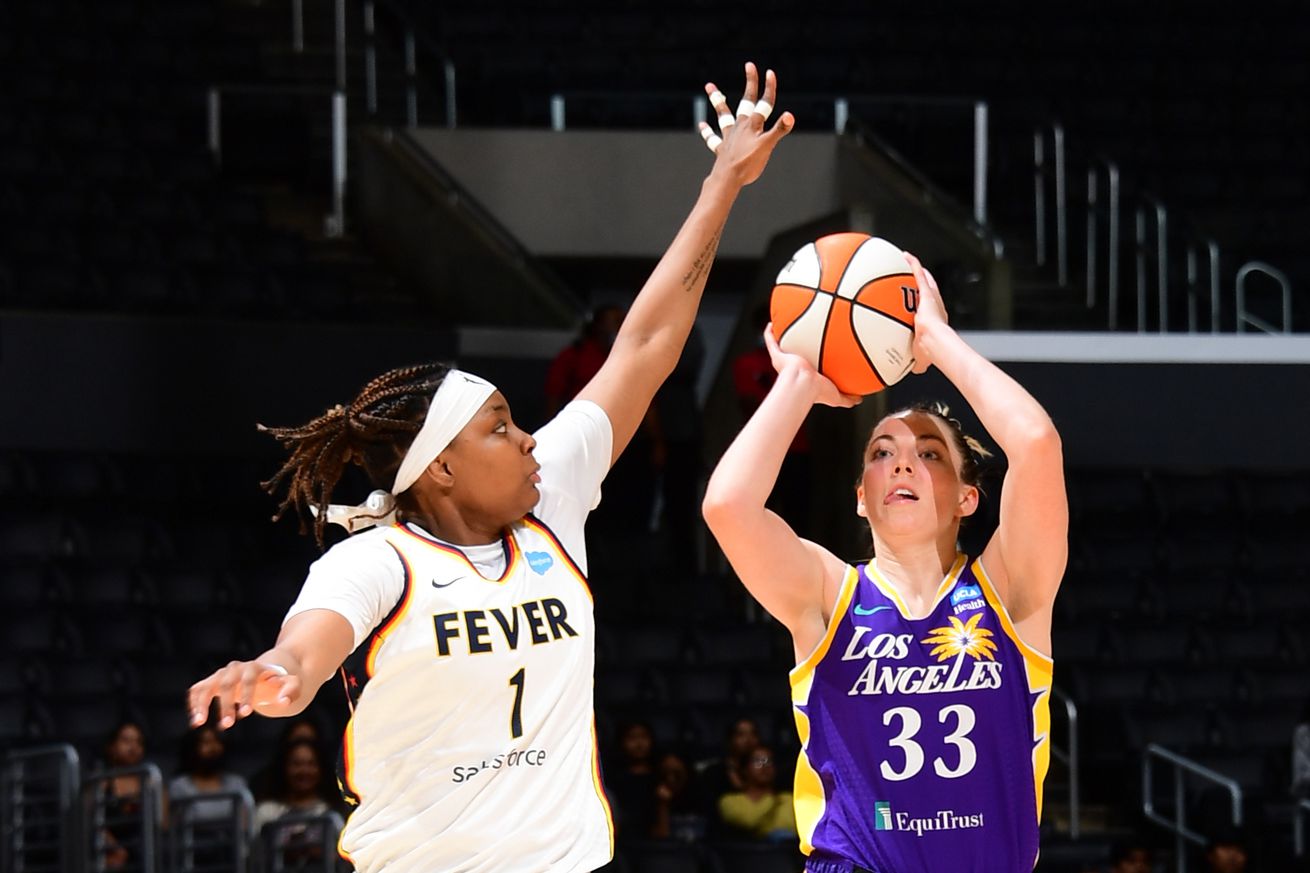
Regardless of how great, good or okay presumptive No. 1 pick Caitlin Clark is as a rookie, have the Indiana Fever built a playoff-caliber team? And how can free agent additions Katie Lou Samuelson and Damiris Dantas help Indy return to the postseason?
The Indiana Fever’s biggest move of the 2024 offseason will come on April 15, when Commissioner Cathy Engelbert will, presumably, call Caitlin Clark’s name first at the WNBA Draft. With a second-straight No. 1 pick, the Fever will add a player who will enter the league with sky-high expectations, which, in turn, will increase the pressure on an Indiana team that has not made the playoffs since 2016.
If @CaitlinClark22 gets drafted to the @IndianaFever this summer, I believe she will put up MVP-caliber numbers as a rookie. While her opponents will be at a different skill level than in college, her teammates will be at another level as well. Her game translates.
— Rebecca Lobo (@RebeccaLobo) February 4, 2024
Whether or not Clark arrives in the W as a MVP-level player, and especially if she encounters early, understandable struggles, it’s worth asking if the Fever have built a playoff-caliber team. While a partnership between Clark and Aliyah Boston (who very well might be the Fever’s MVP candidate) oozes potential, can the duo lead Indiana back to the postseason promised land in a league that features a growing number of championship-minded teams stacked with veteran talent?
And can free agent additions Katie Lou Samuelson and Damiris Dantas help them do so?
Indiana signed Samuelson, who was a member of the Los Angeles Sparks last season but did not play due to pregnancy, to a two-year protected veteran contract that will pay her $175,000 in 2024 and $180,250 in 2025. Dantas, who played one preseason game for the Minnesota Lynx last season before being waived, also signed a two-year protected veteran deal; she’ll earn $97,100 in 2024 and $100,000 in 2025. The Fever also retained reserved free agent Maya Caldwell by signing her to a training camp contract. Temi Fagbenle, who last played in the WNBA in 2019 for the Lynx, also signed a training camp contract. Including those two, Indiana will open training camp with 13 players on roster, and that’s before they select Clark and two other players in the draft. Cuts must be made to meet the 12-player roster maximum.
With the Fever’s free agency business seemingly settled, how will their two main additions—Samuelson and Dantas—enhance Indy’s playoff prospects?
What Katie Lou Samuelson brings to the Fever
In our Fever free agency preview, we suggest that general manager Lin Dunn should inquire about Elena Delle Donne and determine if the two-time MVP would be interested in a trade to Indiana. We also identified Karlie Samuelson as a potential shooter for the Fever to add.
Well, Indiana opted for the other Samuelson, who, when at her best, has flashed the rough outlines of an EDD-like game.
a threat from the 3-point line
Katie Lou Samuelson brings size & scoring to the roster. pic.twitter.com/3Ml6rqU2qb
— Indiana Fever (@IndianaFever) February 2, 2024
The No. 4 pick in the 2019 WNBA Draft by the Chicago Sky, Katie Lou Samuelson has yet to find her WNBA home, playing for a different team—Chicago, Dallas, Seattle and Los Angeles—in each of her four active seasons.
Her expected signature skill—efficient shotmaking from the midrange and behind the arc—hasn’t materialized at a consistent level. In 101 career games, Samuelson has shot 39.9 percent from the field and 33.9 percent from 3. Her statistical impact in other areas also leaves something to be desired. Although 6-foot-3, Samuelson has never averaged more than 3.5 rebounds per game. Primarily asked to be a play finisher, she’s also shown little creation for others, averaging only 1.4 assists per game for her career. On the defensive end of the floor, Samuelson probably has exceeded expectations, functioning as a reliable cog in defensive schemes despite her lack of elite athleticism.
Still, Samuelson is a worth a gamble for the Fever. In her 2022 season with the Sparks, Samuelson attempted a career-high 5.0 3-pointers per game, making a career-best 35.2 percent. If Indiana believes her volume and percentage can increase, she’s a near-ideal tall floor spacer for Indiana’s more dynamic offensive players. And if she slides into the starting lineup on the 3 position, she’ll form a big frontline with Boston and NaLyssa Smith, where the sheer size of Samuelson, the 6-foot-4 Smith and the 6-foot-5 Boston can compensate for other defensive weaknesses.
What Damiris Dantas brings to the Fever
If healthy, Damiris Dantas profiles as a perfect off-the-bench big for the Fever. Because of her ability to hit the 3, she can effectively juice an offense, whether by spacing the floor or picking and popping.
Her most productive seasons were 2019 and 2020 with the Minnesota Lynx. In 27 games in 2019, she made 39.3 percent of her 4.1 3-point attempts per game, while also averaging 4.5 rebounds and 3.2 assists. In 2020, she averaged 4.1 3s per game in 22 games, making 43.3 percent of them; she also contributed 6.1 rebounds, 2.6 assists and more than a steal per game.
“She’s a veteran post player and she can play the four and the five.”
Damiris Dantas is bringing a high level of experience to the squad pic.twitter.com/3EmP1vU8sA
— Indiana Fever (@IndianaFever) February 1, 2024
“If healthy,” however, is the key. Injuries, particularly foot injuries, have hampered Dantas’ career. When on the court, she’s been a positive impact player. But, she’s played over 30 games only twice in her eight-season WNBA career. That the 2024 season will be a compacted one—with the 40-game schedule in an Olympic year—doesn’t inspire confidence in a player with durability issues. Indiana, of course, has more knowledge about her healthy history, which they should use to inform and manage her workload.
Nevertheless, in Samuelson and Dantas, the Fever added two players who are less than sure things. For a team with playoff ambitions, it might have been wiser to pursue players with stronger track records.






